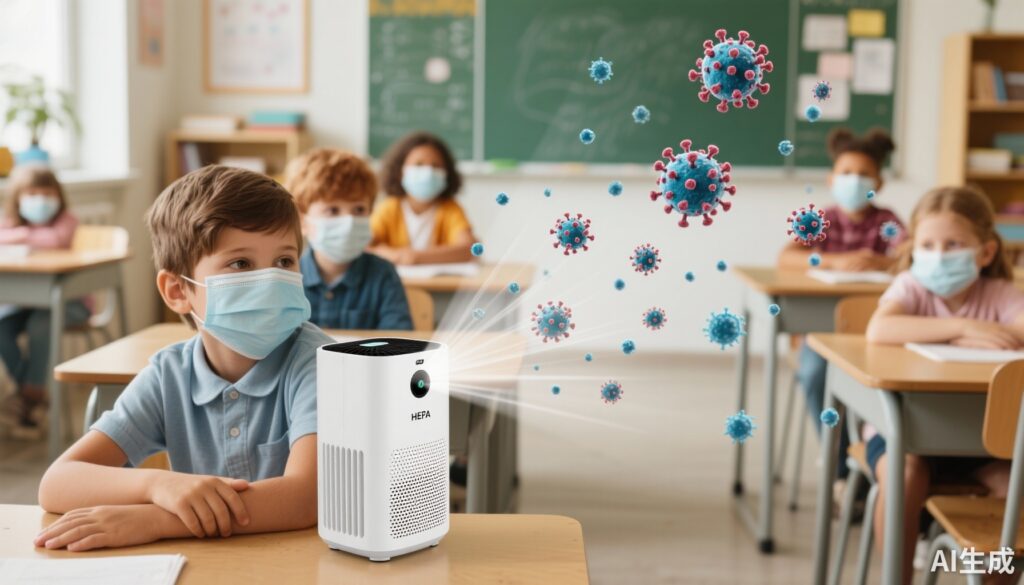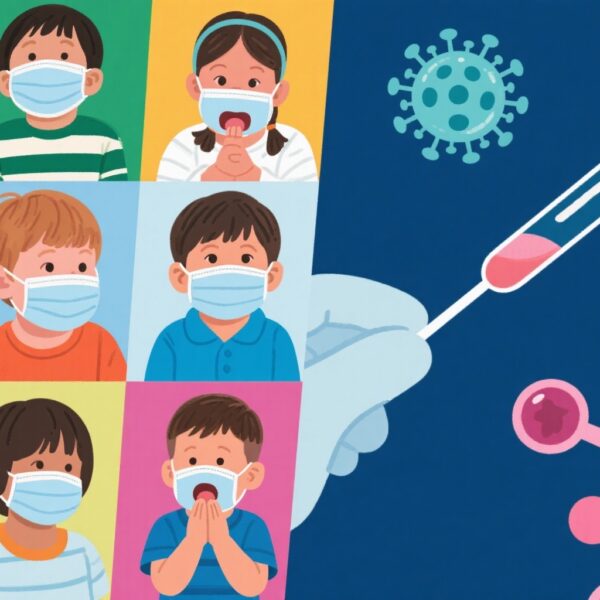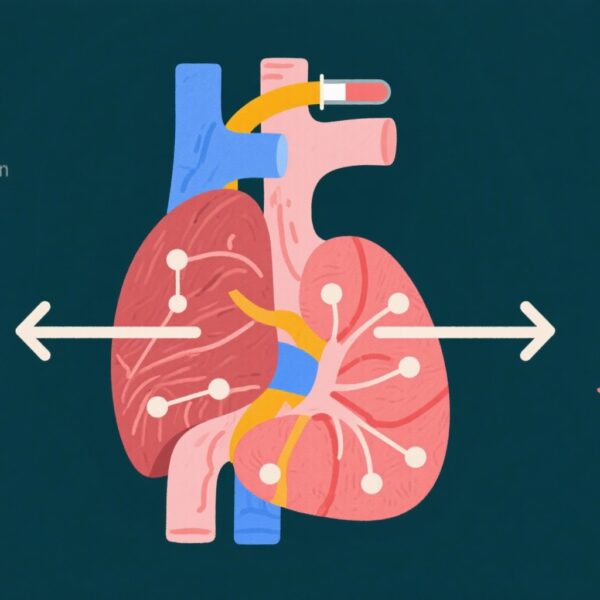Highlight
- Portable HEPA purifiers did not significantly reduce high respiratory viral exposure in elementary school classrooms.
- A modest reduction in the diversity of detectable respiratory viruses was observed with HEPA purifier use.
- Rhinovirus was the most commonly detected virus in air samples from classrooms.
- Environmental factors such as relative humidity, grade level, winter season, and particulate matter influence viral exposure risks.
Background
Respiratory viral infections in children, particularly in elementary schools, represent a major public health burden given their high transmissibility and impact on school attendance and community spread. Effective environmental interventions to reduce airborne viral exposure remain a research priority amid emerging contagious respiratory pathogens. Portable high-efficiency particulate air (HEPA) purifiers have been proposed as a mitigation strategy due to their ability to filter ultrafine particles that can carry viruses. However, data quantifying how such purifiers affect actual viral loads in school air environments—and their influence on specific viral profiles—are limited. This study addresses these gaps by analyzing viral concentrations in classrooms randomized to receive active versus sham HEPA purifiers over multiple sampling periods. Understanding these effects is critical to inform infection control policies in schools to protect children’s health.
Study Design and Methods
This investigation is a secondary, ad hoc analysis of data collected during the School Inner-City Asthma Intervention Study, a cluster-randomized, placebo-controlled trial conducted from 2015 to 2020. The setting included 200 classrooms across 39 public schools in the Northeastern United States, randomized 1:1 to receive either active portable HEPA purifiers or visually identical sham (inactive) units. Each classroom was supplied with four such units. Importantly, both school staff and investigators were blinded to intervention group assignment to minimize bias.
Primary outcome assessment focused on “high viral exposure,” defined by K-means cluster analysis of individual viral concentrations in bioaerosol samples. Secondary outcomes encompassed viral diversity—measured by the number of distinct respiratory viruses detected per sample—and quantitative viral concentration levels.
Three week-long bioaerosol sample collections were conducted during one academic year for each classroom. Air samples were analyzed via digital droplet polymerase chain reaction to quantify 19 respiratory virus types, including rhinovirus, respiratory syncytial virus (RSV) types A and B, and influenza A and B. Additionally, the dataset incorporated environmental variables such as relative humidity, grade, season, and particulate matter concentration, allowing a multivariate assessment of factors associated with viral exposure.
Key Findings
From 532 bioaerosol samples, viruses were detected in 98.5% (524 samples), indicating ubiquitous respiratory viral presence in classrooms. Rhinovirus dominated the viral spectrum, identified in 89.5% of samples. RSV A and B were detected in 12.4% and 23.9%, respectively, with influenza A and B found in 17.7% and 14.3% of samples.
High viral exposure, the primary endpoint, was observed in 22.2% of samples. The HEPA purifier intervention did not significantly reduce the odds of high viral exposure (odds ratio 0.50; 95% confidence interval [CI], 0.08–3.25; P = .46). However, a statistically significant reduction in viral diversity was observed with HEPA purifiers (β = -1.02; 95% CI, -1.68 to -0.35; P = .003), suggesting fewer virus types were present at detectable levels when purifiers were used.
Multivariate elastic net regression analysis implicated relative humidity, grade level, winter season, and coarse particulate matter as significant environmental determinants of viral exposure. These results highlight the multifactorial nature of viral presence and suggest non-device factors substantially modulate airborne viral loads.
Expert Commentary
This robust, cluster-randomized controlled trial secondary analysis provides nuanced insights into the utility and limitations of portable HEPA purifiers as an environmental control measure in elementary schools. While the absence of a significant effect on high viral exposure concentration may temper expectations for HEPA purifiers as sole protective interventions, the noted reduction in viral diversity likely reflects selective pollutant filtration or changes in viral particle suspension dynamics.
The ubiquity of rhinovirus, a notoriously resilient pathogen capable of fine aerosolization, underscores that single-modality interventions may be insufficient to meaningfully alter classroom viral burdens. Environmental co-factors like humidity and particulate matter are plausible modulators of viral survivability and transmission, further complicating direct attribution of viral load reductions to air purification alone.
These findings align with existing literature highlighting that air purifiers contribute to but do not fully achieve comprehensive mitigation of airborne viral risk, especially in dense, dynamic indoor environments such as schools. Complementary measures—including vaccination, hand hygiene, improved ventilation systems, and cohorting—remain critical in multi-layered infection prevention strategies.
Limitations of this analysis include its secondary nature, potential temporal variations in viral prevalence, and reliance on PCR-based detection, which identifies viral nucleic acid but does not confirm infectivity. Nonetheless, the rigorous blinded randomized design and high-resolution viral profiling strengthen the validity of these results.
Conclusion
Portable HEPA air purifiers alone do not significantly decrease the odds of high respiratory viral exposure in elementary school settings but may reduce the variety of viral pathogens present in classroom air. These data support the need for comprehensive, multicomponent interventions integrating environmental controls, behavioral strategies, and public health measures to effectively mitigate respiratory viral transmission among schoolchildren.
Ongoing research should further elucidate the interplay between environmental factors and airborne pathogen survival and explore optimized purifier placement and combined approaches tailored to school environments. Policymakers and school administrators should therefore adopt a holistic infection control framework rather than relying solely on air purification devices.
Funding and Trial Registration
The original study was funded by grants from the National Institutes of Health and other supporting foundations as reported. The trial is registered on clinicaltrials.gov under NCT02580711.
Reference
Sun Y, Haghnazari D, Huang CY, Baig A, Kim M, Cunningham A, et al. Air Purifier Intervention for Respiratory Viral Exposure in Elementary Schools: A Secondary Analysis of a Randomized Clinical Trial. JAMA Netw Open. 2025 Oct 1;8(10):e2536951. doi:10.1001/jamanetworkopen.2025.36951. PMID: 41071551; PMCID: PMC12514627.



